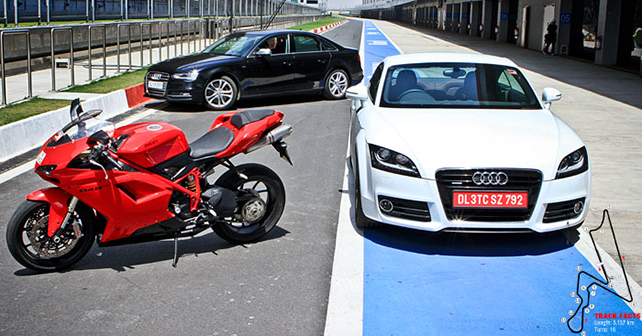
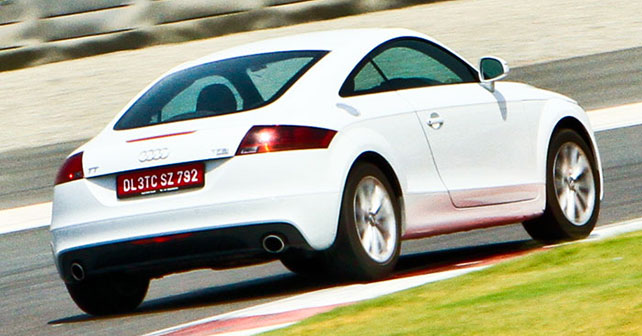
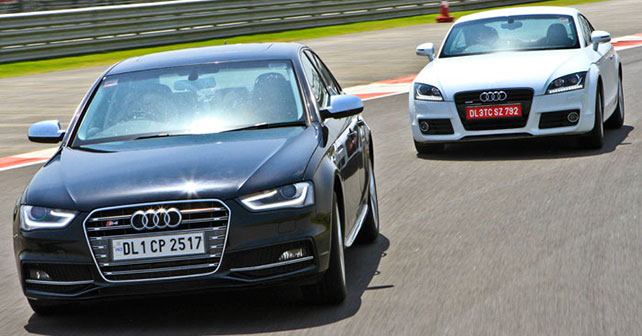
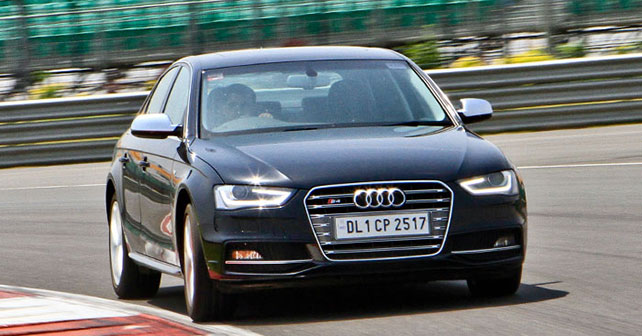
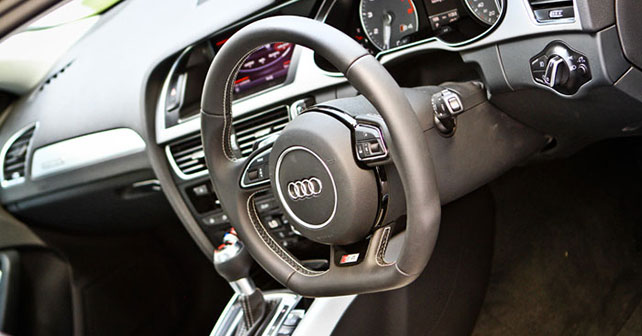

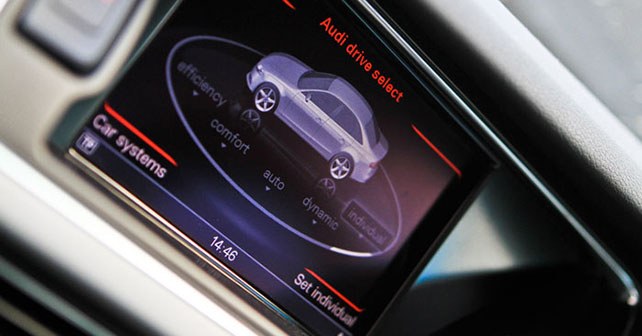
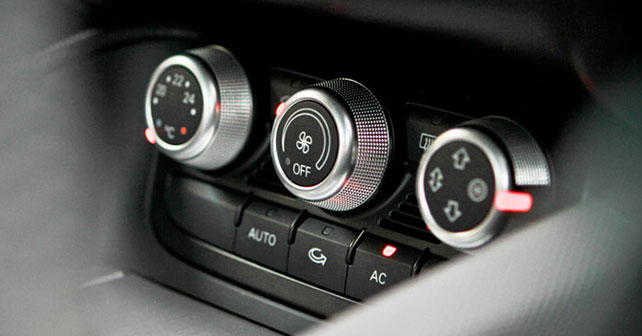
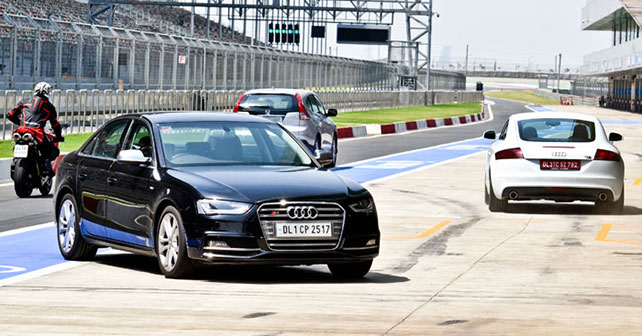
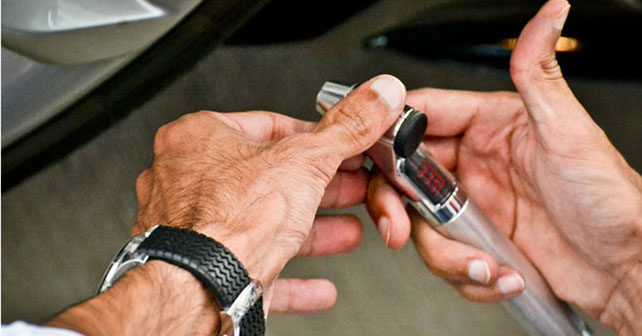
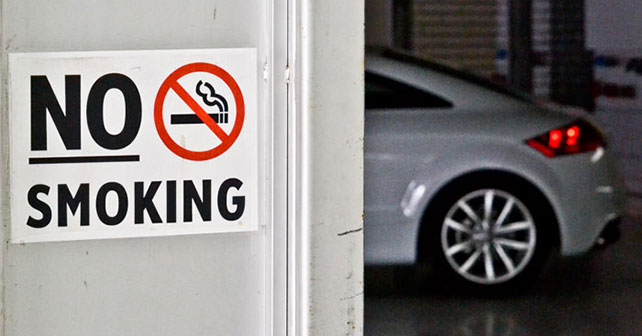
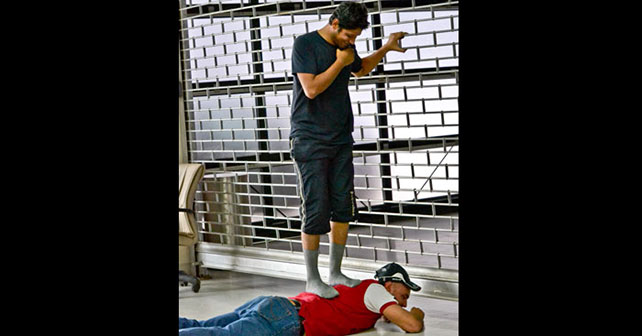
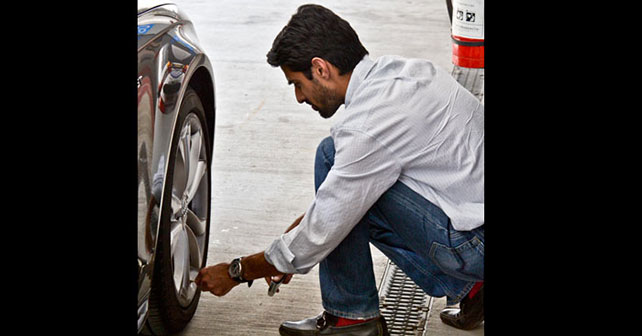
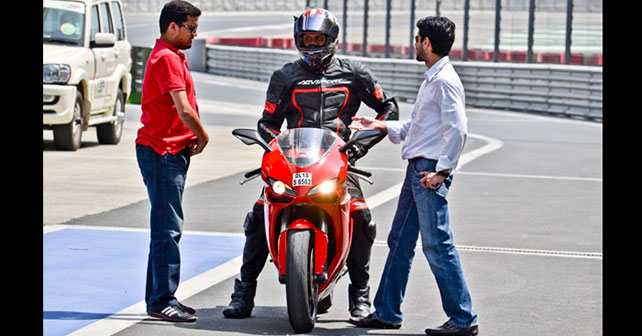
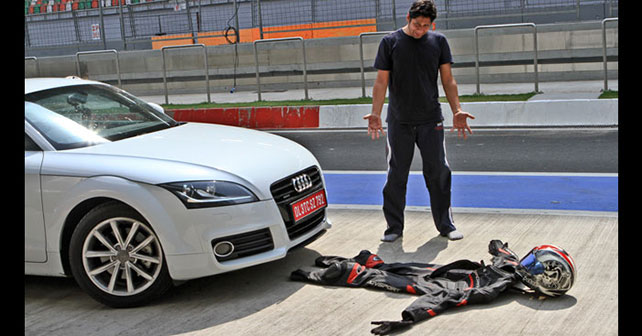
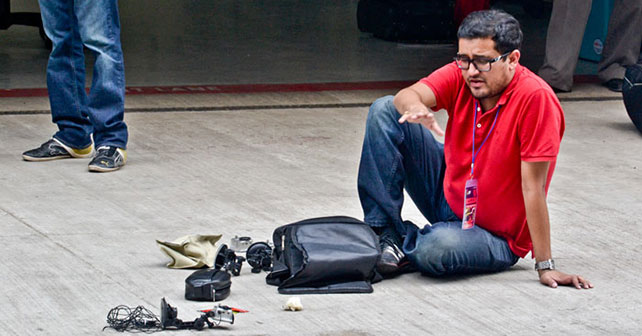
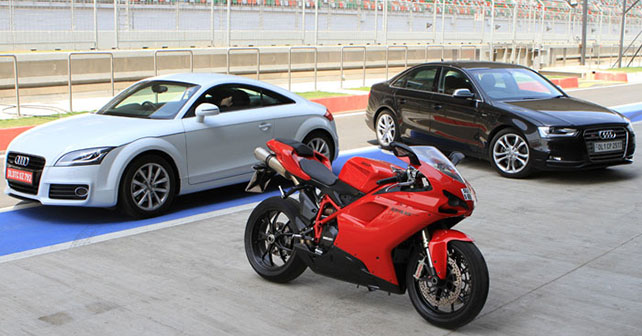
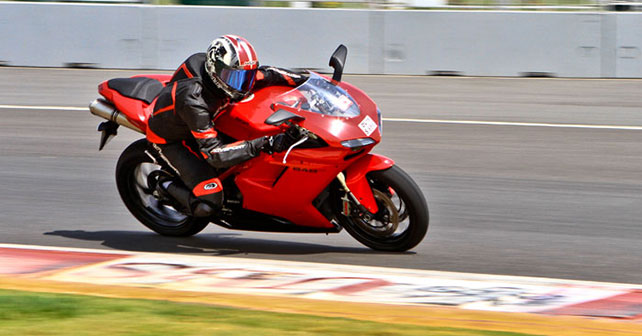
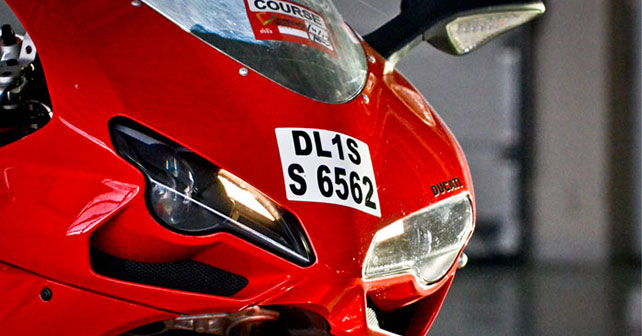
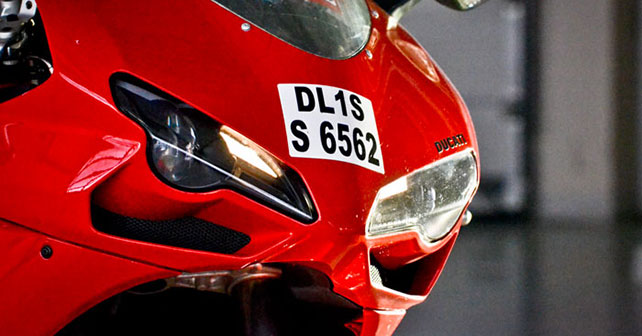
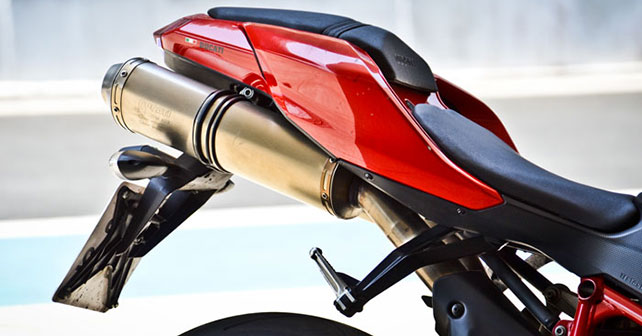
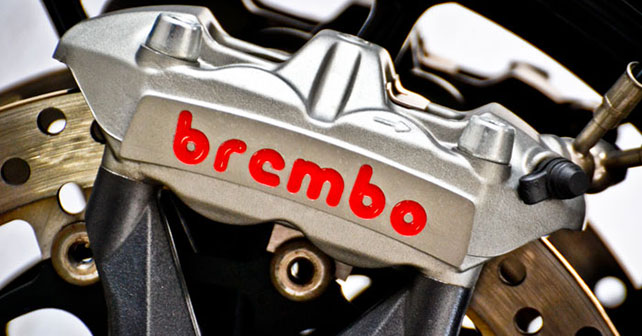
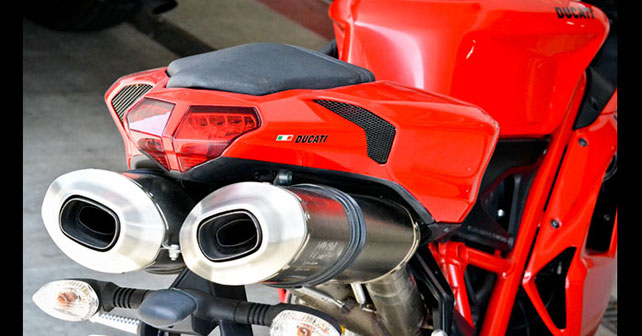
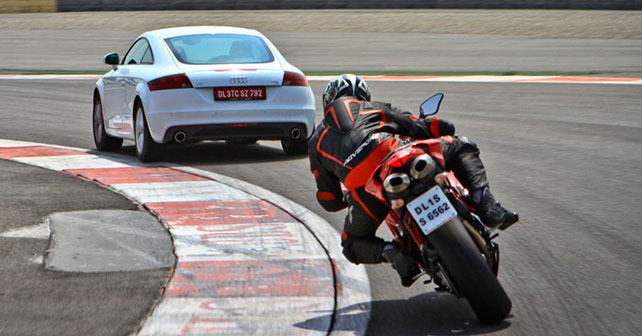

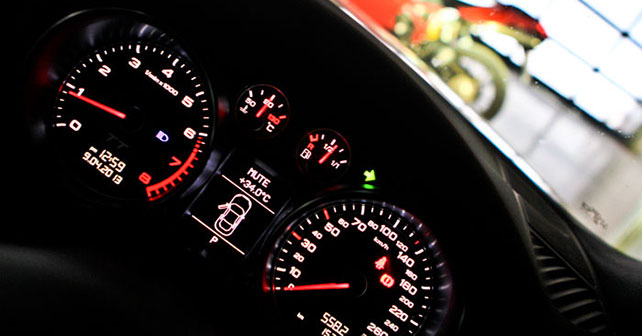
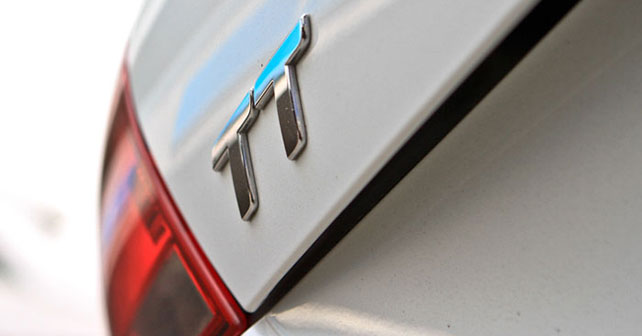
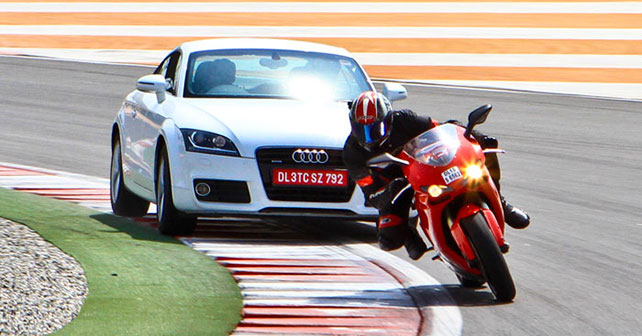
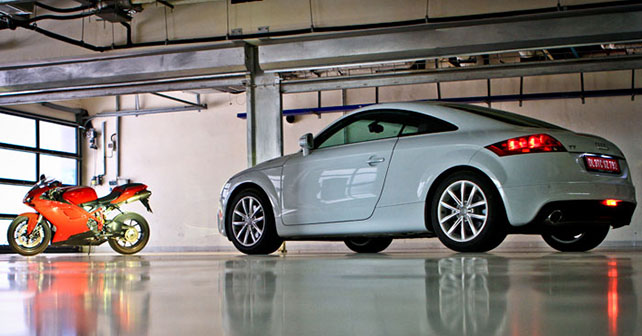
Ducati 848 EVO The Ducati 916 is mentioned in hushed whispers by diehard motorcycle chaps. It’s recognized as one of the best superbikes ever
Ducati 848 EVO
The Ducati 916 is mentioned in hushed whispers by diehard motorcycle chaps. It’s recognized as one of the best superbikes ever produced, and it’s one of my all-time favourites. So, in 1994, when the 748 debuted, it was hailed as the baby superbike – as it carried the same shape as the 916. And that was the birth of the supersport category for Ducati. In 2003, Ducati replaced the 748 with the 749, and the famous horizontal twin-lights were suddenly gone. The 749 looked exactly like the 999, and though the 999 was superlatively good, I never quite liked the 749. But then, in 2008, the 848 came along and suddenly the horizontal twin-lights were back! More importantly, the supersport category got one of the best motorcycles ever. And, believe it or not, the 848 is more powerful than the original 916. How times change!
I’ve always liked the 848 – the way it rides and delivers its power is perfect for city use. Even if you leave the EVO puttering about at 50km/h in 6th, it won’t complain. But, when you open the taps, the engine simply erupts and is ever-eager to reach its redline. And then there’s the noise it makes once you go past 8,500rpm – it’s absolutely seductive. But then, we’re here to go against the Audi TT essentially – the 848 equivalent for sports cars. The TT sits somewhere in the middle of the sports car world, and the 848, too, is a middleweight. Perfect, let’s go then.

In the 848, there’s no tech wizardry to help you if you get it wrong – there’s no ABS or traction control, and the steering is so immediate that even if you overdo it slightly with the shoulders it’ll land you in trouble. This is a very raw bike, and it needs to be treated gently at first – before being unleashed! You need to gain confidence in it. The last time I rode the 848, I clearly took a lot of time to get used to it, and it wasn’t any different this time around either.
I was riding a sports bike on the BIC after a long time, and needed to run the tyres in to get the momentum flowing. The rear tyre wasn’t in a great shape and gassing the bike exiting the slow corners was a hairy experience. But where I enjoyed it the most were the fast, flowing sections of the circuit. We were riding on the main car loop, so the track is tighter than it is in the altered section for the bikes. Using this configuration, there were two fast bends that I missed a lot, but the flowing chicane made up for it and I gained a couple of seconds over my previous outing in the 848 – which isn’t bad at all considering I wasn’t using the bike loop. The suspension is quite stiff, and the direction changes can take you by surprise if you’re not prepared.
The 848 EVO is all about making the rider feel like a king – you’re the one in charge, so there’s an immense feeling of satisfaction. Yes, I lost to the TT and S4, but it was to be expected – the TT has four contact patches and drive that goes to all four wheels. And then there’s a safety net governed by complex electronics. I, on the other hand, had two thin contact patches and drive going to just one of these two wheels.
I may have had a slower lap time, but I had more fun. I know that much!
Audi TT
To this day, I remember the first time I saw the original Audi TT in the US. It looked as though Michelangelo, Andy Warhol, and Stephen Hawking got together to design a car – it really did look like rolling sculpture going down the road. It was stunning! Then, some cars did an impromptu about-turn on the Autobahn, at speed, and they had to put a lip spoiler on its rounded rump – which ‘spoiled’ (pun intended) the purity of the lines if you ask me. Despite that, the first generation TT never really drove as good as it looked.
But Audi addressed this with the second generation TT, which came out in 2006. We drove the 3.2 V6 Quattro many years ago in the mountains around Lonavala, and came away convinced that it was proper sports car material. And now, Audi has introduced the four-cylinder 2.0 litre Quattro, making it the most affordable sports car on the market – well, at 50 lakhs, affordable is a relative term! So, how did it do at the BIC?

Well, at 208bhp, it’s over 120 horsepower down on the S4. But it is about 500 kilos lighter. Plus, it’s lower to the ground, and has magnetic dampers that should suit the track very well indeed. The dampers use magnetic fields to instantly adjust the amount of damping needed based on the conditions. So, the TT should ride quite firmly on the track, which is what you need (and it does), and quite comfortably on the street as well (it doesn’t, as it’s still a little too stiff on our roads for everyday use).
The surprising thing, though, is that the engine is incredibly tractable on the circuit. Frankly, it feels a lot bigger than its 2.0 litre specs suggest. Max torque of 350Nm kicks in from as low as 1,600rpm, so there’s no turbo lag to speak of. 208bhp can be had all the way from 4,300 to 6,000rpm – so the engine is always in its power-band. The dual-clutch 6-speed S-tronic gearbox is seamless, so you simply have to put it in ‘Sport’ and let the transmission figure everything out on its own.
Frankly, the TT drove a lot better on track than I expected. The turn-in was instant, changes of direction were immediate, and, yes, while it did appear to understeer a little as you put the power down, the Quattro would kick in and miraculously pull you out of the corner. This meant that you could brake late, turn in with confidence, and then simply put your foot flat to the floor and let the four-wheel drive work its magic.
So, for the price of a nicely specced A6, you can now buy a proper sports car. It’s chuckable, yet precise, and very rewarding on the track. But there are a few omissions. Yes, it has a Bose sound system, but it doesn’t come with a Multi-Media interface, or Bluetooth. And the interior just isn’t special, like most other Audi’s.
But, when you flick it around a bend, none of that matters. Then, it’s the Audi Space Frame, which keep the chassis light, yet stiff, the Quattro all-wheel drive system, which keeps the TT planted on the road, and the DSG, which always keeps you in the right gear, that you appreciate. It’s Vorsprung Durch Technik at its best.
Audi S4
So, the S4 – with its 328bhp, 3.0 litre supercharged V6 monster of a motor – won the day. The 848 may be able to sprint to 100km/h in just 3.25 seconds, but its one-wheel drive just isn’t able to keep pace with the four-wheel drive Audi’s around the full track. Moreover, with a track temperature of 56-degrees centigrade (we’re already dreading the next few months), and a worn rear tyre, the 848 was always fighting from behind. Add to that the fact that the S4 is no slouch – with a 0-100km/h time of 5 seconds, which is pretty impressive for a full sized sedan – it’s no surprise that the S4 came out on top.
But, if I’m honest, I’m a bit of a sports car purist – so, secretly, I did want the TT to be the quickest. Don’t get me wrong, I love the S4 to bits – it’s just that the TT was so much more fun on the track. It was more in tune with what we were trying to achieve – it was more pliable, more accurate, and felt faster than it really was. And that’s what its about, isn’t it? So, despite the lap-time deficit, I would still pick the TT for the track. The S4, on the other hand, was an absolute joy on the journey to-and-from the circuit. It strikes just the right balance between aggression, subtlety and luxury. It’s a great mix between muscle car and luxury car.

The 3.0 litre supercharged V6 is a monster of a motor, with instant power on demand. It shoves you back into the seat, while the exhaust note, which is relatively muted at low revs, comes alive to let you know the true nature of what lurks underhood. In fact, it’s got a distinct growl on the overrun as the dual-clutch gearbox instantly swaps cogs. The 7-speed DCT is, of course, instant and seamless – as you’d expect. And the cabin is as special as they come. The alcantara seats may be hard to keep clean though. The flat-bottom steering feels right out of a Lamborghini, and, naturally, you get B&O sound as well.
The Multi-Media interface allows you to customize the Audi Drive Select, so you can choose between the preset modes of Comfort, Auto, and Dynamic, or opt for Individual where you can adjust throttle response, shift times, and steering response for the electro-mechanical steering. Since, we were on the track, we put everything in dynamic mode – at which point you can extract the most out of this powerhouse of a motor.
The S4 looks stunning as well. In the dark blue of our test car, it has just the right amount of aggression to stand out from the crowd, without shouting for attention. But, for me, it’s the engine that plays the central role in this car. The power is simply intoxicating. And with the Quattro four-wheel drive system, it’s also extremely usable. What ‘M’ is to BMW, and ‘AMG’ is to Mercedes, ‘RS’ is to Audi. ‘S’ then fills a sweet-spot somewhere in between the everyday mundane and the insanely exciting. It’s a beautiful balance between performance and usability. It’s a car that I would love to drive everyday.
But on the BIC, its extra 500-odd kilos compared to the TT are noticed around every single corner. It feels front heavy and understeers hopelessly if you’re too aggressive. The four-wheel drive system does rein it in, but it feels as though it supersedes the driver in doing so. Essentially, you take a back seat to the clever diffs of Quattro! If you reconcile with that, and let the technology work for you, you can set an extremely quick lap time in the S4 – but you do have to let the technology take the lead.
At roughly the same price, I would pick the S4 – simply because it truly is the perfect everyday machine. Just remember to give it in for a service every time you plan a track day and convince the dealer to give you a TT on loan in the interim – then, you can have your cake and eat it too!

| CURRENT TEST |
| WESTFIELD |
| Lap Time: 2:38.9 | Top Speed: N/A |
| MINI COOPER S |
| Lap Time: 2:38.1 | Top Speed: 189 (Km/H) |
| BMW 328i |
| Lap Time: 2:36.2 | Top Speed: 190 (KM/H) |
| JAGUAR XKR |
| Lap Time: 2:26.3 | Top Speed: 237 (Km/H) |
| PORSCHE 911 |
| Lap Time: 2:20.8 | Top Speed: 238 (Km/H) |
| MERCEDES-BENZ SLS AMG ROADSTER |
| Lap Time: 2:20.3 | Top Speed: 248 (Km/H) |
| PREVIOUS TEST |
| MERCEDES-BENZ C63 AMG |
| Lap Time: 2:22.7 | Top Speed: 231 (Km/H) |
| BMW M5 |
| Lap Time: 2:25.4 | Top Speed: 238 (Km/H) |
| MASERATI QUATTROPORTE S |
| Lap Time: 2:37.0 | Top Speed: 212 (Km/H) |
| BMW 320d* |
| Lap Time: 2:41.9 | Top Speed: 183 (Km/H) |
| MERCEDES-BENZ C250 CDI* |
| Lap Time: 2:42.1 | Top Speed: 182 (Km/H) |
| MINI COOPER S COUNTRYMAN (W) |
| Lap Time: 2:45.1 | Top Speed: 181 (Km/H) |
| VOLVO S60 D3* |
| Lap Time: 2:45.8 | Top Speed: 173 (Km/H) |
| HYUNDAI ELANTRA (W) |
| Lap Time: 2:46.4 | Top Speed: 175 (Km/H) |
| HYUNDAI I20 |
| Lap Time: 2:53.5 | Top Speed: 152 (Km/H) |
| VW JETTA 2.0 TDI |
| Lap Time: 2:55.2 | Top Speed: 167 (Km/H) |
| HYUNDAI ELANTRA |
| Lap Time: 2:55.6 | Top Speed: 166 (Km/H) |
| MARUTI SWIFT |
| Lap Time: 2:58.8 | Top Speed: 146 (Km/H) |
| HYUNDAI VERNA (W) |
| Lap Time: 3:00.7 | Top Speed: 162 (Km/H) |
| CHEVROLET SAIL |
| Lap Time: 3:01.4 | Top Speed: 141 (Km/H) |
| TOYOTA LIVA |
| Lap Time: 3:01.8 | Top Speed: 139 (Km/H) |
| CHEVROLET CRUZE (W) |
| Lap Time: 3:02.8 | Top Speed: 174 (Km/H) |
| RENAULT PULSE |
| Lap Time: 3:03.0 | Top Speed: 139 (Km/H) |
| FORD FIGO |
| Lap Time: 3:03.3 | Top Speed: 138 (Km/H) |
Engine: 849cc / 2 Cylinders / 8 Valves / DOHC
Fuel: Petrol
Transmission: 6-Speed Manual
Power:140bhp@ 10,500rpm
Torque: 98Nm @ 9750rpm
Acceleration: 0-100km/h – 5.3 seconds
Price: Rs. 15 Lakhs (Ex-showroom, Delhi)

Write your Comment on